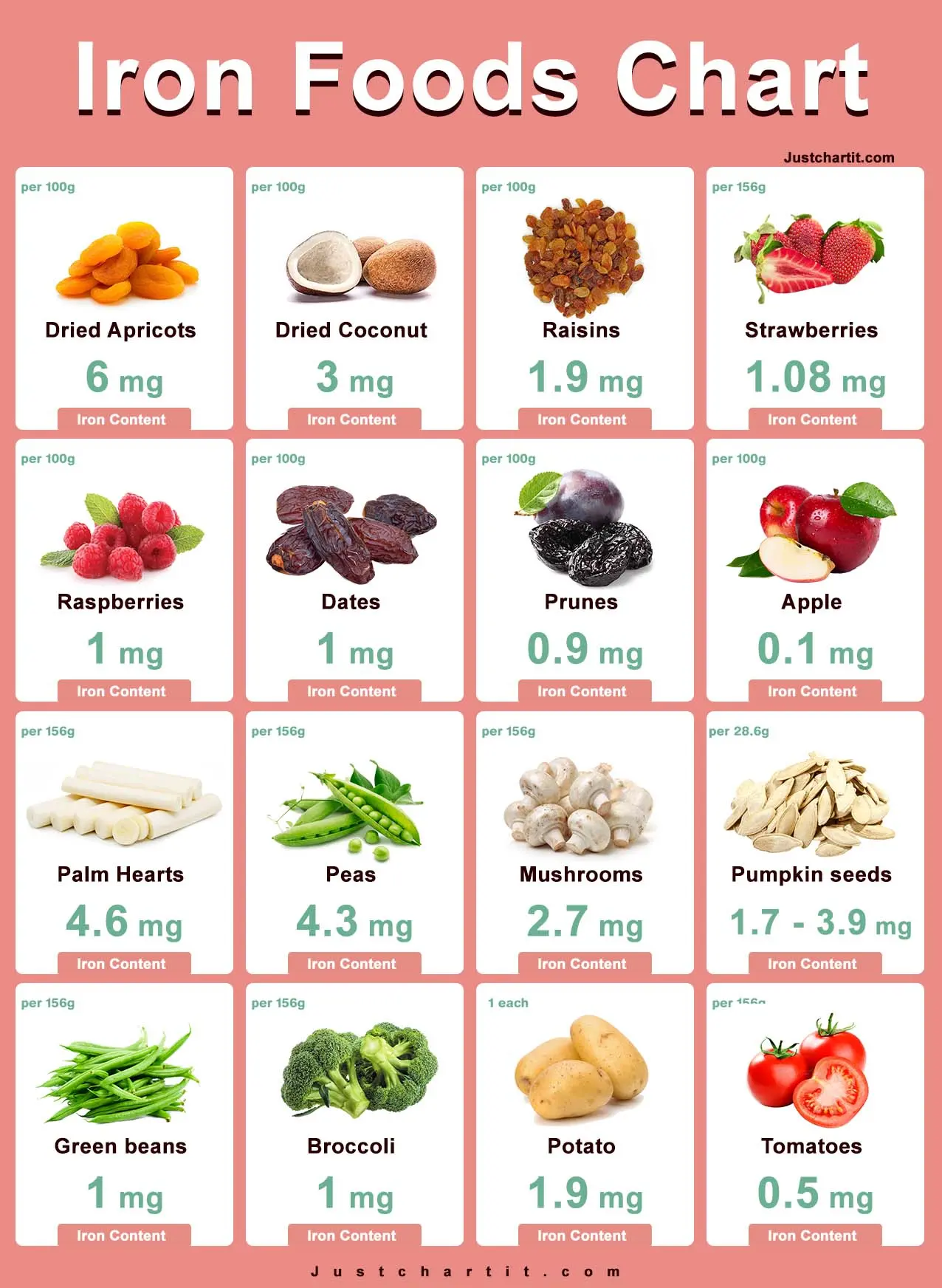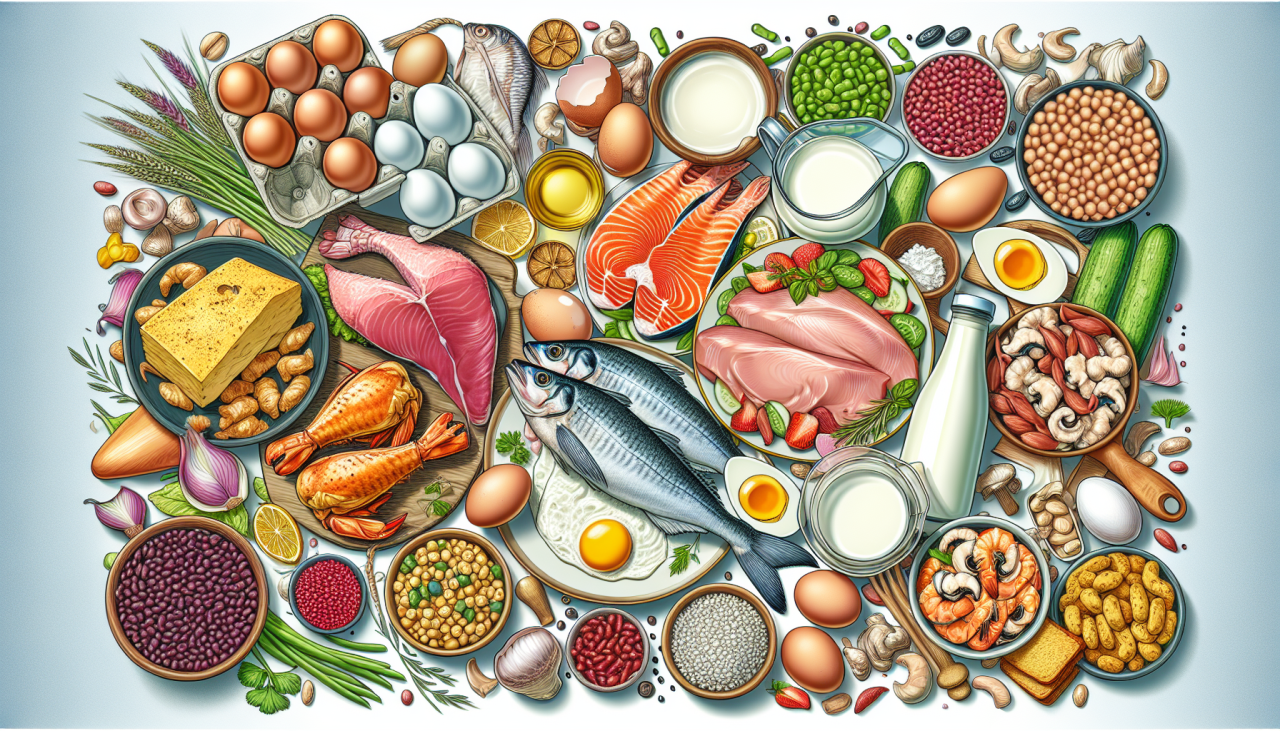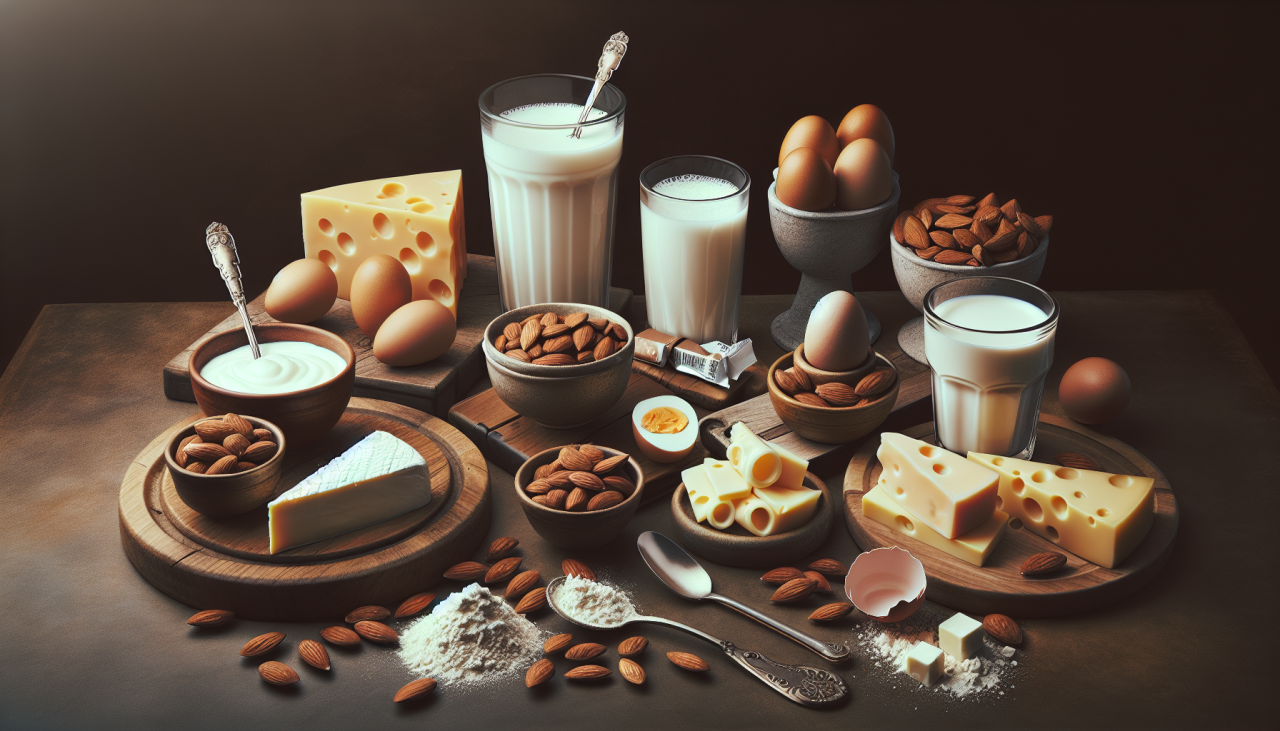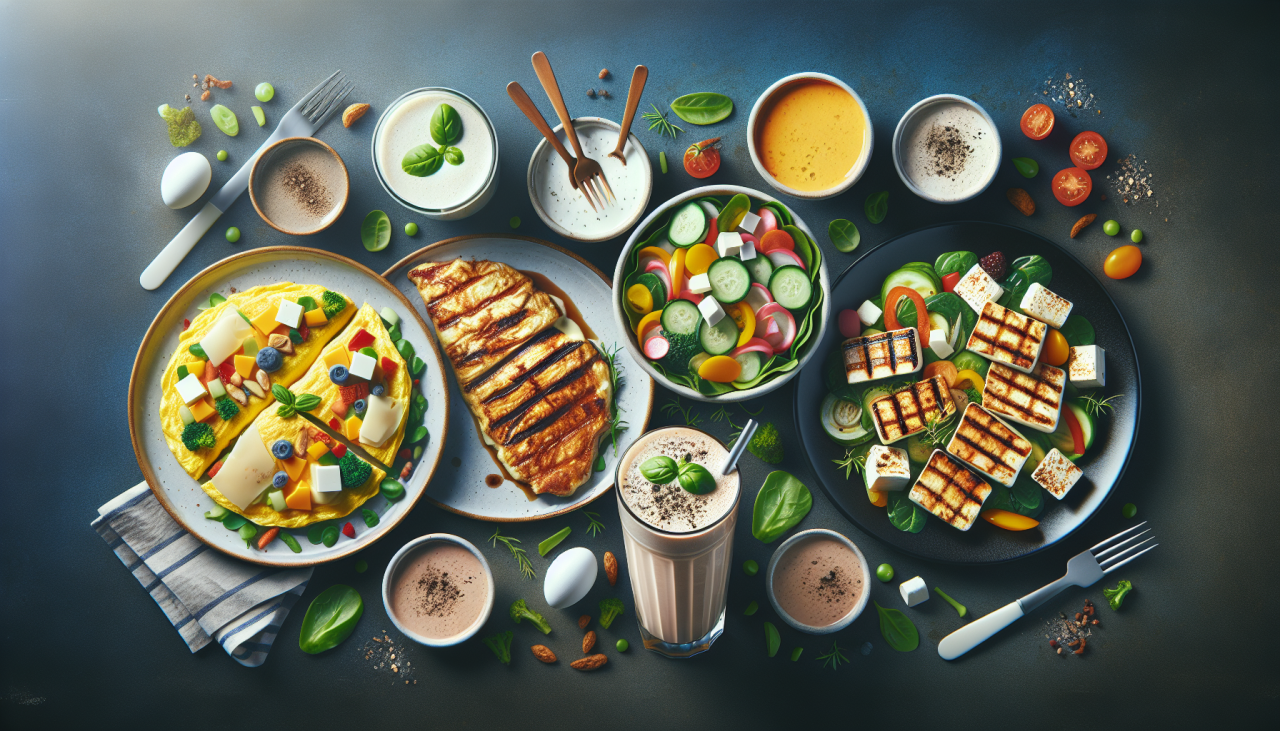
Which Fruit Is High in Iron?
Iron is an essential mineral that the body utilizes to produce hemoglobin, a protein in red blood cells responsible for transporting oxygen throughout the body. Additionally, iron plays a crucial role in removing carbon dioxide and supports physical growth, cellular functions, neurological development, and the synthesis of certain hormones.
Types of Iron in Foods
Iron in foods is categorized into two types: heme and non-heme.
– Heme Iron: This type of iron is primarily found in animal products such as meat, poultry, and seafood. It is more readily absorbed by the body.
– Non-Heme Iron: This form is present in plant-based foods, including fruits, enriched grains, and some fortified breakfast cereals.
Fruits High in Iron
Several fruits are rich in iron, particularly:
1. Avocado
2. Strawberries
3. Watermelon
4. Raisins
5. Dates
6. Figs
7. Prunes
8. Dried apricots
9. Dried peaches
Consuming these fruits along with foods high in vitamin C—such as citrus fruits, tomatoes, broccoli, and strawberries—can enhance the absorption of non-heme iron.
Symptoms of Iron Deficiency
Iron deficiency, or iron deficiency anemia, may not always manifest symptoms. However, when symptoms do occur, they can include:
– Gastrointestinal upset
– Tiredness and fatigue
– Lack of energy
– Weakness
– Memory issues
– Difficulty concentrating
– Decreased infection resistance
– Problems with body temperature regulation
– Exercise difficulties (e.g., shortness of breath, rapid heartbeat)
– Learning difficulties in infants and children
– Irritability
– Headache
– Brittle nails
– Chest pain or breathing troubles
– Sore tongue
– Restless legs syndrome
– Pagophagia (abnormal craving to eat ice)
– Pica (abnormal cravings for non-food items like clay, dirt, paper products, or cornstarch)
Treatment for Iron Deficiency Anemia
To effectively treat iron deficiency anemia, it is crucial to first identify and address the underlying cause of the iron deficiency. Common causes may include blood loss from conditions such as stomach ulcers or bowel issues.
Treatment options include:
– Oral Iron Supplements: Available as pills or liquid, including ferrous fumarate, ferrous gluconate, ferrous sulfate, ferrous sulfate liquid, and polysaccharide iron complex.
– Intravenous Iron: For individuals who cannot absorb sufficient iron orally or in cases of severe anemia.
– Blood Transfusion: May be necessary in severe cases of iron deficiency anemia.
Addressing iron deficiency through dietary changes alone, such as eating iron-rich fruits, is often insufficient. Medical intervention with supplements or other treatments is typically required.
17 Fruits That Are High in Iron (& How to Boost Absorption)
Iron-Rich Fruits
The following table outlines the iron content in 100 g of various dried fruits:
| Fruit | Iron (mg per 100 g) |
|———————-|———————|
| Pistachios | 7.0 |
| Dried Apricots | 5.8 |
| Raisins | 2.4 |
| Dried Coconut | 3.6 |
| Walnuts | 2.0 |
| Peanuts | 2.1 |
| Almonds | 4.1 |
| Brazilian Nuts | 2.5 |
| Dehydrated Papaya | 3.2 |
| Dehydrated Mango | 1.2 |
| Dehydrated Banana | 1.15 |
| Dehydrated Apples | 1.1 |
| Dehydrated Pineapple | 2.3 |
| Dehydrated Pear | 1.9 |
| Dried Figs | 2.6 |
| Dried Dates | 1.3 |
| Prunes | 3.0 |
Dehydrated fruits provide the highest amounts of iron. However, they also contain more carbohydrates and sugars, so they should be consumed in moderation, especially by individuals with diabetes. Excessive intake may lead to weight gain.
Importance of Iron
Iron is a crucial mineral for red blood cell production, facilitating oxygen transport from the lungs to other body parts and enhancing food absorption. This can result in increased energy, concentration, and optimal physical and mental performance.
Consuming iron-rich fruits high in fiber can also prevent premature aging, as iron is essential for collagen formation. This nutrient is fundamental for maintaining hydrated, firm, and wrinkle-free skin.
Ingesting iron is also crucial for strengthening the immune system and protecting against illnesses like the flu, anemia, or cardiovascular diseases.
Enhancing Iron Absorption
To optimize iron absorption from fruits, it is essential to maintain a diet high in vitamin C, which is present in foods like tomatoes, broccoli, purple cabbage, and fresh oranges.
Another way to enhance iron absorption from fruit is to consume these fruits with other foods rich in vitamin A, such as carrots, tomatoes, and spinach.
For non-vegetarians, iron-rich fruits can be consumed with animal-based proteins like eggs, chicken, beef, and fish.
However, it is important to avoid consuming iron with calcium sources (milk and dairy), tannins (cacao and quinoa), or fiber sources (whole grain rice, soy, and oatmeal), as they can interfere with iron absorption. These foods should be consumed separately.
10 Iron Rich Foods To Add To Your Diet
Certainly! Here’s a rewritten version of the provided content, refined for style, grammar, and presentation:
—
Understanding Iron Deficiency and Iron-Rich Foods
Iron deficiency can lead to anemia, resulting in persistent fatigue, dizziness, lightheadedness, poor concentration, irritability, and other symptoms. Iron, a vital mineral in our bodies, is a key component of hemoglobin in red blood cells, responsible for transporting oxygen, and myoglobin in muscles, aiding oxygen storage.
Key Facts:
– Children aged 7 to 12 months need 11mg/day of iron.
– Adult men and post-menopausal women require 8mg/day, while premenopausal women need 18mg/day.
– Pregnant women should aim for 27mg/day of iron.
– Consuming vitamin C-rich foods like citrus fruits enhances iron absorption, while coffee, tea, and calcium-rich foods can inhibit it.
Recommended Dietary Allowance (RDA) for Iron:
– Men and post-menopausal women: 8mg/day
– Premenopausal women: 18mg/day
– Pregnant women: 27mg/day
– Lactating women: 9mg/day
– Infants and children: Varies with age, ranging from 7mg/day to 15mg/day.
Iron-Rich Foods to Incorporate into Your Diet:
1. Spinach: A vegetarian-friendly source rich in iron (2.7mg/100g) and vitamin C (28mg/100g), aiding absorption.
2. Shellfish: Clams (13.98mg/100g) and oysters (5.1mg/100g) are excellent sources.
3. Tofu: Provides 5.4mg of iron per 100g, along with protein, calcium, and various vitamins and minerals.
4. Poultry, Red Meat & Fish: Red meat, chicken, and fish like tuna are rich in iron and other essential nutrients.
5. Whole Grains: Wheat, oats, brown rice, and quinoa offer iron along with fiber and antioxidants.
6. Dark Chocolate: A tasty option with 6.32mg of iron per 100g, also containing beneficial nutrients.
7. Legumes: Peas, lentils, and chickpeas provide iron along with protein and other essential nutrients.
8. Seeds: Sesame, pumpkin, and flaxseeds are iron-rich, packed with additional nutrients.
9. Nuts: Pistachios, cashews, and almonds are iron sources, contributing to overall health.
10. Dried Fruits: Prunes, raisins, and apricots offer iron and other health benefits.
Factors Affecting Iron Absorption:
– Combining iron-rich foods with vitamin C enhances absorption.
– Cooking in iron cookware and soaking/sprouting can improve iron absorption.
– Tea, coffee, and calcium-rich foods can inhibit iron absorption.
– Heme iron from animal sources is better absorbed than non-heme iron from plants.
Excessive Iron Intake Side Effects:
Iron overload disorders, like hereditary hemochromatosis, can lead to organ damage if left untreated. Regular check-ups and early diagnosis are crucial for management and treatment.
—
Hope this fits what you were looking for! Let me know if there’s anything else you need.




